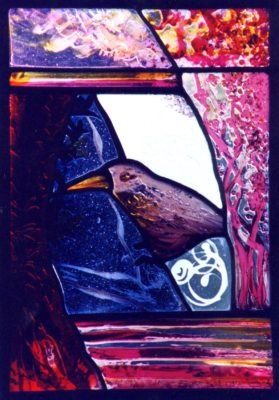~ Stirling Castle: The Douglas Room window ~
Home » Conservation » Stirling Castle: The Douglas Room window
“Stirling Castle is first mentioned around 1110, in Alexander I’s reign; he died here in 1124. Throughout the Wars of Independence with England (1296–1356), Stirling was hotly fought over, changing hands frequently. Bloody battles were fought in its shadow – Wallace’s great victory over Edward I at Stirling Bridge (1297), and Bruce’s decisive encounter with Edward II at Bannockburn (1314). Bruce then destroyed the castle to prevent it falling into enemy hands again.
Stirling was the favoured residence of most of Scotland’s later medieval monarchs. Most contributed to its impressive architecture. In James IV’s reign (1488–1513), Scotland was increasingly receptive to Classical ideas spreading across Europe from Renaissance Italy. James spent much time and money making the castle fit for a European monarch, chiefly to impress his queen, Margaret Tudor, daughter of Henry VII of England.
His legacy was continued by his son, James V, equally determined to impress his second bride, Queen Marie de Guise. Their daughter, Mary Queen of Scots, was crowned here in 1543, and Mary’s own son, the future James VI, was baptised here in 1566. The celebrations culminated in a fireworks display on the Esplanade, the first seen in Scotland. James VI hosted a great three-day celebration here in 1594 to mark his own son’s baptism.e head of the increasingly powerful Douglas family, William, 8th Earl of Douglas, was invited under the protection of the king to Stirling Castle. The intention was to persuade William to break some alliances felt to be against the royal interest. When he refused James could not contain his anger, the king drew his dagger and stabbed William twenty nine times before throwing his body from the window. This is traditionally said to have taken place in the King’s Old Building but this had not yet been built. It may have been in an earlier building on the same site.
The Douglas Room, damaged by fire in 1855, contained amongst the memorabilia John Knox’s Pulpit, a Communion Table and a Russian Drum.”
c. text from “http://www.douglashistory.co.uk”
In 2019, during restorations in the Castle, I was asked to conserve a 19th C broken heraldic window commemorating the death of William Douglas in the room where he is believed to have died.


